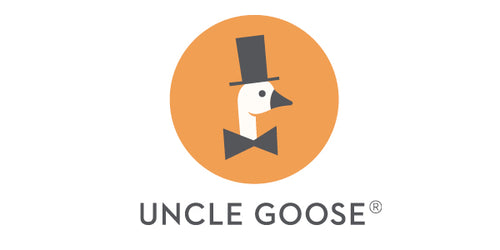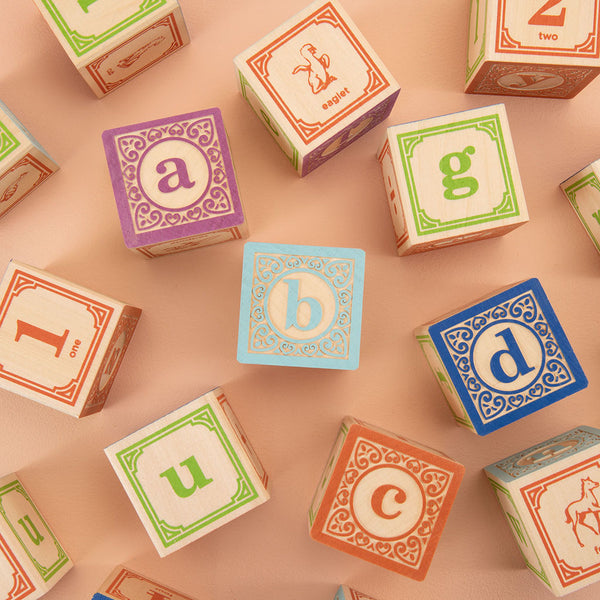
ABC Blocks: who came up with the idea for Alphabet Blocks, anyway?
Your Uncle Goose didn’t invent alphabet blocks. The idea for ABC blocks is centuries old.
And who can say who really invented alphabet blocks? The idea of putting letters on cubes seems as if it might be as old as time.
But is it that simple? Or did the popularity of ABC blocks take time to build and grow?
What we know as ABC blocks were first described in the late 1500’s in a book by an English writer, Sir Hugh Plat. The book, The Jewell House of Art and Nature, included a rundown of Plat’s inventions, ideas, and discoveries.
One idea Plat conceptualized? A set of alphabet blocks.
Along with Plat’s description of what alphabet blocks are, he included an illustration. It’s not the greatest illustration in the world, but it gets the point across. The concept is basically letters on cubes.
And yet, alphabet blocks didn’t take off right away. It’s not like people in the 1500's saw “letters on cubes” and thought, “Yes! This is the educational toy I’ve been waiting for!”
Some ideas take time to catch on. The end of the Elizabethan era probably wasn’t the right time for ABC blocks as an educational toy to gain traction in England.
But around 100 years later, the age of Enlightenment began. English philosopher John Locke briefly mentions alphabet blocks in one of his essays from his 1693 work, Some Thoughts Concerning Education.
Locke liked blocks. He was not a big fan of drilling children on facts. Rather, he encouraged free play. Locke believed in playing your way into learning. Enlightenment thinking, indeed.
Still, it took another 100+ years for wooden blocks to gain more widespread popularity. German education pioneer Friedrich Fröbel began creating wooden block sets in the 1800’s.
Fröbel was a pioneer in children’s education. He invented “Kindergarten.” That concept caught on, and is still with us today.
As a part of his early childhood learning platform, Fröbel crafted educational wooden blocks sets. His designs were mostly geometric shapes: rectangles, squares, circles, and triangles.
However, Fröbel didn’t paint or engrave letters or numbers on his building blocks. But in the late 1800’s, the American board game manufacturer Milton Bradley created toy blocks inspired by Fröbel’s work.
Bradley’s Original Kindergarten Alphabet and Building Blocks marked the first time blocks were mass-manufactured with letters on them. The blocks weren’t all cubes, though. Like Fröbel’s wooden toys, Bradley’s toys took on a variety of geometric shapes.
From there, the concept of “putting letters on blocks” started to gain momentum. Samuel Hill applied for and received a patent for blocks with letters on them in 1867. Hill became the first American to mass produce toy wooden alphabet blocks in the US.
Today, children play and learn with ABC blocks. They learn to stack, sort, spell, and socialize.
Adults use alphabet blocks, too. Do a photo art search for concepts like “fundamental” or “basics.” Chances are good that an image of ABC blocks will appear. Alphabet blocks are often used as metaphors for simplicity in advertisements and marketing designs.
So who really invented ABC blocks? We can’t say for sure. But your Uncle Goose likes to think that toy blocks are a great idea that will continue to evolve and build over time.



